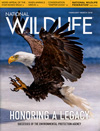Like most Monarch butterfly enthusiasts, I have witnessed the destruction of Monarch eggs and larva by roadside mowing. Example: I counted 23 eggs on 33 Common Milkweed plants in a "waste area" behind a local business in downtown Fremont, Ohio. I returned the following morning to collect them, only to find the 80 x 12 foot area was mowed the evening before. From my notes, I see from this particular "waste area" that I collected 18 eggs one day…and over 30 eggs the next day! All these eggs hatched and were raised successfully at my home- 48 Monarchs were ultimately released into the wild from the two searches of this one "waste area". However, that was 5 years ago. I have seen fewer Monarch presence in this one "waste station" the last several years.
Aside from the mass annihilation of Monarchs "up North", Lincoln Brower, a household name among Monarch enthusiasts, believes the population is in peril due to logging activities in the Monarch's winter haven in Mexico. Contrarily, Andy Davis believes there is no clear indications that the Monarch population is endangered. Davis uses two U.S. monitoring stations and stated, “I wrote my paper because I wanted people to see a different side of the story. I think the situation is not as simple as Dr. Brower and his colleagues make it out to be.”
In Mexico, the Monarchs survive in an oyamel fir tree forest no larger than the city of Chicago, clustering against the trees for shelter from winter storms. However, illegal logging, which Brower describes as “absolutely ferocious”, continues. Brower has monitored monarch populations within these trees for several decades. He worries that logging will devastate the Monarch, particularly because the butterflies seem unable to use any sites other than historic ones. “There are 12 known sites,” said Brower. “We’ve flown over the forest, we’ve searched with satellites to look for new sites, and these are it.”
Brower’s paper summarizes how much area overwintering monarchs have occupied over the past 17 years, of which the last 15 have seen steady diminishment. During the 2009-10 winter season, the butterflies covered less than five acres, an all-time low. Last season, they rebounded to cover roughly 10 acres, an area still only half of the 15-year average.
“What is going on on the ground down there is a disaster,” Brower said. But, while Davis believes Brower’s methods and analyses are valid, he thinks the overall picture is more complicated.
"By presenting only those numbers, in that one stage of the monarch’s life cycle, you’re seeing only one part,” said Davis. “Look at a different state in the life cycle, and you get the numbers that I showed.”
Analyzing counts from fall monitoring stations in Cape May, New Jersey and Peninsula Point, Michigan, he found populations remaining steady. These fall counts capture the butterflies after a summer of reproducing: The average female monarch lays 700 eggs during her lifetime. Davis believes the monarch’s reproductive prowess outweighs the trend seen in overwintering populations in Mexico.
Most of the butterflies traveling through Cape May and Peninsula Point don’t travel to the overwintering grounds in Mexico, but Davis believes they still give important numbers. “These sites are far apart and they still show the same steady trend,” said Davis. “Even if you say these sites are in the wrong place, their consistency tells me there are probably other sites in the United States where there are no significant drop in numbers.”
Brower disagrees, “There is no reason to expect a decline up there, and the sample size is small. They are a drop in the bucket compared to the population making it to Mexico.”
Both men agree a new monitoring site is sorely needed. Butterflies from all over the United States collect in Texas, funneling into a narrow chute to fly over the mountains into the forests of Mexico. A monitoring site here, say Brower and Davis, would give the best picture of the monarch’s overall health.
"Being at these migration sites is spectacular,” said Davis. “Catch it right and you can watch them whiz by every few seconds. It’s like being in an orange blizzard.”
See Also:
Exciting New Monarch Research
Monarch Population Overwintering in Mexico
Create a Monarch Waystation in Your Yard
Monarch Population Way Down From Last Year
Robert Morton, M.Ed., Ed.S. writes about transforming urban sprawl into wildlife-friendly spaces, one yard at a time! Click HERE to read his story. Please buy from us, since ten (10%) percent of income from ad sales is donated to MONARCH WATCH. Have you created a wildlife-friendly space in your yard? We'd enjoy sharing it! Contact us at the secure Bpath Mail Form.






